If you read my blog you know that I try to post smooth, polished pieces. I try to produce something coherent, even conclusive. This one’s different: a bunch of notes that I recently found in a forgotten file from five years ago. The notes pose questions that intrigue and trouble me as much now as they did back then. I don’t even remember writing this stuff. Probably much of it landed in previous posts and articles. But anyway, here are the questions. Still without clear answers.
I’ve annotated the text and filled in a few spots that would be completely incomprehensible otherwise. I’ve also added tips to more recent work and inserted several links. But the text I started with remains relevant, at least to me. Things don’t change very fast, and I think these are hard questions.
……………
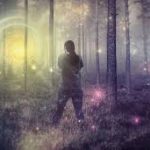 My drug use began with psychedelics. Then came heroin. They’ve always seemed like diametrical opposites. This is where I get my intuitive feel for
My drug use began with psychedelics. Then came heroin. They’ve always seemed like diametrical opposites. This is where I get my intuitive feel for 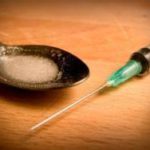 whether drugs are good or bad. Psychedelics open you up, heroin shuts you down. But I dropped acid roughly 300 times in my late teens and early twenties. I shot heroin about 30-40 times. Why do l assume that heroin is addictive and LSD is pure sunshine?
whether drugs are good or bad. Psychedelics open you up, heroin shuts you down. But I dropped acid roughly 300 times in my late teens and early twenties. I shot heroin about 30-40 times. Why do l assume that heroin is addictive and LSD is pure sunshine?
The one wedge nearly everyone agrees on is whether a drug is addictive or not. If only it were that simple. Is addictiveness really a feature of the drug? Or a feature of the person and the social surround (Rat Park)? When you take the addict as the unit of analysis, you place him in a cage, and then analyze his interaction with this or that drug. How stupid. How is it that scientists and doctors have become the priests of such stark distinctions?
The boiled-down argument re drugs and addiction: think about Percy Menzies [see his guest-post here] and the idea of chemical hooks (in Percy’s view, the only real cure for heroin addiction is OST, opiate substitution therapy, and he especially likes naltrexone: kill the good feeling and they’ll stop). [The idea of opiates as chemical hooks is also pitched in Dreamland, by Sam Quinones.] Then along comes Carl Hart (High Price) who says “addiction” is just a label used to badmouth drugs, and our only responsibility is to educate drug users. [In his new book, Drug Use for Grown-ups, Hart argues that all drugs, including heroin, can be taken recreationally, and it’s repressive for governments to ban any drug for personal use by normal, sane adults.] And along comes Johann Hari (Chasing the Scream), who says that the opposite of addiction isn’t sobriety, it’s human connection. All very liberating. But what about addiction?
Addictive drugs: are they neurochemically distinct? Do addictive drugs mimic natural neuromodulation (opioids, dopamine, etc)….vs nonaddictive drugs (like LSD, psilocybin?) that effect perspective 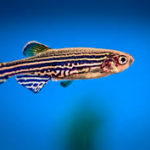 change? [But let me add this: last year I went to a neuroscience conference and learned that baby zebrafish will swim toward water laced with Vicodan, an opiate painkiller. I doubt they’d swim toward an LSD solution.] Mind-altering vs. mood-enhancing. Is that what decides? (Though SSRIs are mood-enhancing…and guess what, they’re addictive…sort of.) But behavioural addictions are just as serious, aren’t they? (Gambling addicts can destroy their lives as effectively as any crack-head) Can behaviour also be divided into mood-enhancing vs mind-altering? Probably not. Maybe there are just good and bad addictions…in life, love, and drugs. Oh, and in products. Where do we stop?
change? [But let me add this: last year I went to a neuroscience conference and learned that baby zebrafish will swim toward water laced with Vicodan, an opiate painkiller. I doubt they’d swim toward an LSD solution.] Mind-altering vs. mood-enhancing. Is that what decides? (Though SSRIs are mood-enhancing…and guess what, they’re addictive…sort of.) But behavioural addictions are just as serious, aren’t they? (Gambling addicts can destroy their lives as effectively as any crack-head) Can behaviour also be divided into mood-enhancing vs mind-altering? Probably not. Maybe there are just good and bad addictions…in life, love, and drugs. Oh, and in products. Where do we stop?
 Why do we value control so much? Is control the wedge? Or is harm the crucial marker? Control vs harm and the history of antipsychotics…that increase control and kill the soul. Drugs that harm: don’t they require harm reduction? Or is it happiness, well-being, that’s key? Then why prescribe SSRIs when you could prescribe opiates for emotional pain? If you value control, then get this: drugs are a way to control our thoughts and feelings. Yet self-medication often leads to self-harm. How do we weigh the goodness of drugs when control, well-being, creativity, awareness and harm are all simultaneously changing variables?
Why do we value control so much? Is control the wedge? Or is harm the crucial marker? Control vs harm and the history of antipsychotics…that increase control and kill the soul. Drugs that harm: don’t they require harm reduction? Or is it happiness, well-being, that’s key? Then why prescribe SSRIs when you could prescribe opiates for emotional pain? If you value control, then get this: drugs are a way to control our thoughts and feelings. Yet self-medication often leads to self-harm. How do we weigh the goodness of drugs when control, well-being, creativity, awareness and harm are all simultaneously changing variables?
Drugs and therapeutics…. Psilocybin vs. depression and anxiety. If that’s okay, why not prescribe opiates for those who crave them? The duplicity built into psychiatry: we want what’s best for you. Oh really?
Patches to move us from moralism to relativism:
Individual differences — genetics are the simplest exemplar, but different life experiences matter hugely. Trauma leads to drug-use, not the reverse. Yet, the research shows that kids who never try drugs do worse than kids who do. How do we explain that?
Developmental differences — the wrong drug at the wrong age might become the right drug at the right age.
 Societal differences — my undergrads at Nijmegen [a rural region of the Netherlands] still see addicts as a different species; in Amsterdam students don’t see it like that. Let’s send Mr Hazelden to an ayahuasca ceremony and see how/whether he evolves.
Societal differences — my undergrads at Nijmegen [a rural region of the Netherlands] still see addicts as a different species; in Amsterdam students don’t see it like that. Let’s send Mr Hazelden to an ayahuasca ceremony and see how/whether he evolves.
…………………………
A sort of summary:
 Why would anyone put ayahuasca in the same category as heroin…isn’t there something intrinsically valuable about perspective change, for its own sake? And what’s the difference
Why would anyone put ayahuasca in the same category as heroin…isn’t there something intrinsically valuable about perspective change, for its own sake? And what’s the difference  between methadone and SSRIs when it comes to allaying depression (yet one is for disgusting addicts and the other is for normal healthy people, like Aunt Mary). But I so disagree with Carl Hart when he says that when your teenage kid wants to try meth your only duty (and your only right) is to educate him/her about safety issues. Are the distinctions between good and bad drugs in the drugs themselves (as we often think reflexively) or in the relation between the drug and the user? We have to really get individual differences. And developmental differences. Binge drinking at 16, not so good…social drinking at age
between methadone and SSRIs when it comes to allaying depression (yet one is for disgusting addicts and the other is for normal healthy people, like Aunt Mary). But I so disagree with Carl Hart when he says that when your teenage kid wants to try meth your only duty (and your only right) is to educate him/her about safety issues. Are the distinctions between good and bad drugs in the drugs themselves (as we often think reflexively) or in the relation between the drug and the user? We have to really get individual differences. And developmental differences. Binge drinking at 16, not so good…social drinking at age  28 can really help people connect. And what I learned from [my good friend and courageous colleague] Shaun Shelly: Isabel and I often reflect on his description of the unemployable/sidelined teens in Capetown smoking (not shooting) heroin…for social cohesion and a little pleasure. So, put it all together: look at the relationship between the person (of a certain age) and the drug, in the context of the social group and the society at large.
28 can really help people connect. And what I learned from [my good friend and courageous colleague] Shaun Shelly: Isabel and I often reflect on his description of the unemployable/sidelined teens in Capetown smoking (not shooting) heroin…for social cohesion and a little pleasure. So, put it all together: look at the relationship between the person (of a certain age) and the drug, in the context of the social group and the society at large.
Coda: What makes drugs bad? Is there something simple and primitive like the idea of being too attracted?
Conclusion: I don’t know.
………………………
A number of you posted very helpful comments about what you’d like to see in future posts. We’re working on it. Next, Eric Nada, a past contributor to the blog, will post a piece on psychedelic therapy for addiction. Given the above, I’m aware of possible ironies.
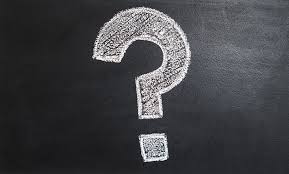
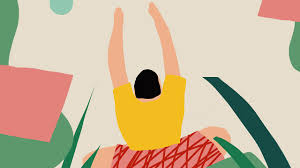
 My first year in Berkeley, California. It’s 1968-69. The sun is shining, exotic flowers and trees line the streets, the hippie types (including me, sort of) wear their colourful clothes with playful exuberance. There were smiles on many faces. Fascinating men, beautiful women. We felt like we were ushering in a new age of humanity, a real cultural revolution.
My first year in Berkeley, California. It’s 1968-69. The sun is shining, exotic flowers and trees line the streets, the hippie types (including me, sort of) wear their colourful clothes with playful exuberance. There were smiles on many faces. Fascinating men, beautiful women. We felt like we were ushering in a new age of humanity, a real cultural revolution. But I was lost. I wandered the streets feeling empty and unreal. I didn’t know what to do with myself. Depression crashed down on me every evening I was alone — that is, without my roommate or my part-time girlfriend, Susan. I had a very hard time being with family members, because I felt there was something deeply wrong with me, beneath contempt. I resented the walls of politeness that seemed to shut me out of their lives. I lived in a pool of shame that was almost impossible to sense clearly because it was so constant. I have no doubt that my traumatic experience created or refined this part of me — broken, shamed, empty.
But I was lost. I wandered the streets feeling empty and unreal. I didn’t know what to do with myself. Depression crashed down on me every evening I was alone — that is, without my roommate or my part-time girlfriend, Susan. I had a very hard time being with family members, because I felt there was something deeply wrong with me, beneath contempt. I resented the walls of politeness that seemed to shut me out of their lives. I lived in a pool of shame that was almost impossible to sense clearly because it was so constant. I have no doubt that my traumatic experience created or refined this part of me — broken, shamed, empty.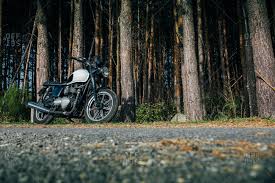 But there was one way to feel better, to feel…vital. Drugs. You can bet there were a lot of drugs available in Berkeley in those days. And they worked. From cannabis I went to psychedelics, acid two or three times a week, riding my motorcycle through thickets
But there was one way to feel better, to feel…vital. Drugs. You can bet there were a lot of drugs available in Berkeley in those days. And they worked. From cannabis I went to psychedelics, acid two or three times a week, riding my motorcycle through thickets 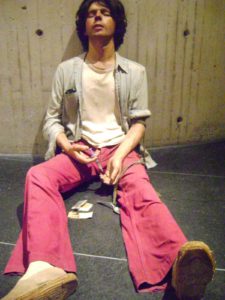 of hallucinations, and then from psychedelics to heroin, and then on to pharmaceuticals and crime. Check out my first book on addiction —
of hallucinations, and then from psychedelics to heroin, and then on to pharmaceuticals and crime. Check out my first book on addiction — 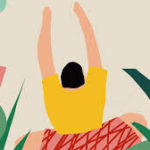 Now, when my meditation leads me to my wounded parts, I greet that 17-year old kid and let him know that it’s not his fault, that I accept him completely — him and his 12-year spree of crime and self-abuse — and that I love him. I let him know that he doesn’t have to live in that crazy, tilted world anymore. And that’s all he needs, that acceptance and care. It heals him.
Now, when my meditation leads me to my wounded parts, I greet that 17-year old kid and let him know that it’s not his fault, that I accept him completely — him and his 12-year spree of crime and self-abuse — and that I love him. I let him know that he doesn’t have to live in that crazy, tilted world anymore. And that’s all he needs, that acceptance and care. It heals him.

 actually induces shame with little or no validation needed. IFS calls this critic a manager — a part whose job it is to anticipate others’ reactions and try to avert worst-case scenarios. But notice: anticipation is a mental state, not a social exchange. It’s really just a belief we carry around with us.
actually induces shame with little or no validation needed. IFS calls this critic a manager — a part whose job it is to anticipate others’ reactions and try to avert worst-case scenarios. But notice: anticipation is a mental state, not a social exchange. It’s really just a belief we carry around with us. — one she’d already prepped with an exacto knife. Then Carla would say “Oh no!” and “Oh my!” (at timed intervals) while gazing at the child’s face. The poor kid would then look away, hide his or her head, and often protest: It’s not my fault! An internal shame-inducing “program” was now at full throttle.
— one she’d already prepped with an exacto knife. Then Carla would say “Oh no!” and “Oh my!” (at timed intervals) while gazing at the child’s face. The poor kid would then look away, hide his or her head, and often protest: It’s not my fault! An internal shame-inducing “program” was now at full throttle. As noted last week, the addict’s shame is so wounding because of lost connections with caring, loving others. So what’s left? How can we be soothed? IFS is all about establishing and reinforcing connections within us. The theory points to a calm, empathic centre in each of us. The part that’s not a part. They call it Self with a capital S. To me, that centre feels like a warm glow of self-forgiveness or self-compassion or just I’m-ok-ness, though of course words don’t do it justice.
As noted last week, the addict’s shame is so wounding because of lost connections with caring, loving others. So what’s left? How can we be soothed? IFS is all about establishing and reinforcing connections within us. The theory points to a calm, empathic centre in each of us. The part that’s not a part. They call it Self with a capital S. To me, that centre feels like a warm glow of self-forgiveness or self-compassion or just I’m-ok-ness, though of course words don’t do it justice. keep you company, so you don’t have to be so alone. I know it sounds almost trite. Oh, that’s self-compassion…we know about that. No, it’s not that simple. This is the act of connecting with a part that has been expelled — innumerable times — because that’s what shame does. A part that’s desperate for compassion…or, at first, at least, a bit of company.
keep you company, so you don’t have to be so alone. I know it sounds almost trite. Oh, that’s self-compassion…we know about that. No, it’s not that simple. This is the act of connecting with a part that has been expelled — innumerable times — because that’s what shame does. A part that’s desperate for compassion…or, at first, at least, a bit of company. Cece, that firefighter can also be helped by the part that’s not a part. It can be talked to — hey there! — but not by The Critic. Rather, it needs to hear from the Self, which can say: I’ve got your back. I’m not the familiar part that’s always screaming at you, that critic. I’m going to help take care of things. You don’t have to do all this drastic stuff yourself. And just between us, you do leave quite a mess.
Cece, that firefighter can also be helped by the part that’s not a part. It can be talked to — hey there! — but not by The Critic. Rather, it needs to hear from the Self, which can say: I’ve got your back. I’m not the familiar part that’s always screaming at you, that critic. I’m going to help take care of things. You don’t have to do all this drastic stuff yourself. And just between us, you do leave quite a mess.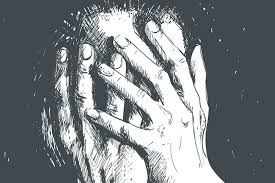
 way, to retreat in fear, attack in anger, and so on. The action tendency evoked by shame may be the urge to hide the self. But there is also a purely mental state corresponding with each emotion, a state that might be called the feeling itself. That’s what I want to explore.
way, to retreat in fear, attack in anger, and so on. The action tendency evoked by shame may be the urge to hide the self. But there is also a purely mental state corresponding with each emotion, a state that might be called the feeling itself. That’s what I want to explore.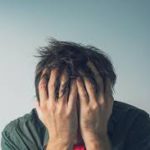 shame occupies a loop that both emanates from and returns to the urge to get high. The first half of the loop is clear enough. Using drugs addictively is universally shunned because it epitomizes the loss of control, sometimes viewed as self-indulgence or hedonism. But the second half of the loop is more mysterious.
shame occupies a loop that both emanates from and returns to the urge to get high. The first half of the loop is clear enough. Using drugs addictively is universally shunned because it epitomizes the loss of control, sometimes viewed as self-indulgence or hedonism. But the second half of the loop is more mysterious.